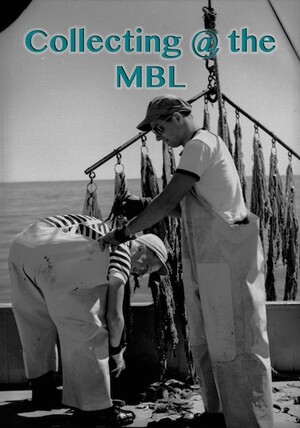Once the Captains had weather and their vessels under control, the next major concern was knowing precisely where they were headed for collecting expeditions. Therefore, many of the logs detail specific directions and locations of catches. What’s especially interesting about these notes is the fact that they are very colloquial. When recounting locations in their logs, Captains rarely used coordinates or formal names, but instead referenced local landmarks such as individuals’ houses or signs. One example is in David Graham’s log from July 21, 1964, when he marked directions to a collecting location as “a little to the west of the second ‘No Trespassing’ sign on Naushon” (p.92). These types of directions were useful for the collectors to know where to return to, but comical in hindsight in their casualness.
- Dolgin, Elie, “The Squid Collector,” http://www.nature.com/news/not-your-average-technician-1.16785
- “John J. Valois, Obituary” http://www.mbl.edu/obituaries/john-j-valois/
- “John Valois, Longtime Specimen Collector and Naturalist, Honored at the Marine Biological Laboratory,” July 12, 2011, http://hermes.mbl.edu/news/press_releases/2011/2011_pr_07_12.html
- The Collecting Net Spring 2006, Vol. 2, No. 1 http://hermes.mbl.edu/publications/collecting_net/2006/06_01net06.html Accessed on July 16, 2015.
- Maienschein, Jane, and Ruth Davis. 100 years exploring life, 1888-1988: the Marine Biological Laboratory at Woods Hole. Jones and Bartlett Publishers, 1989.
- “MBL Moment with Dave Remsen,” MBL Catalyst January 2014, p 12-13. http://www.mbl.edu/wp-content/uploads/2013/07/Catalyst.Winter13-14.web_.pdf Accessed on July 16, 2015.
- Williams, Wendy. Kraken: The Curious, Exciting, and Slightly Disturbing Science of Squid. Abrams, 2011.

